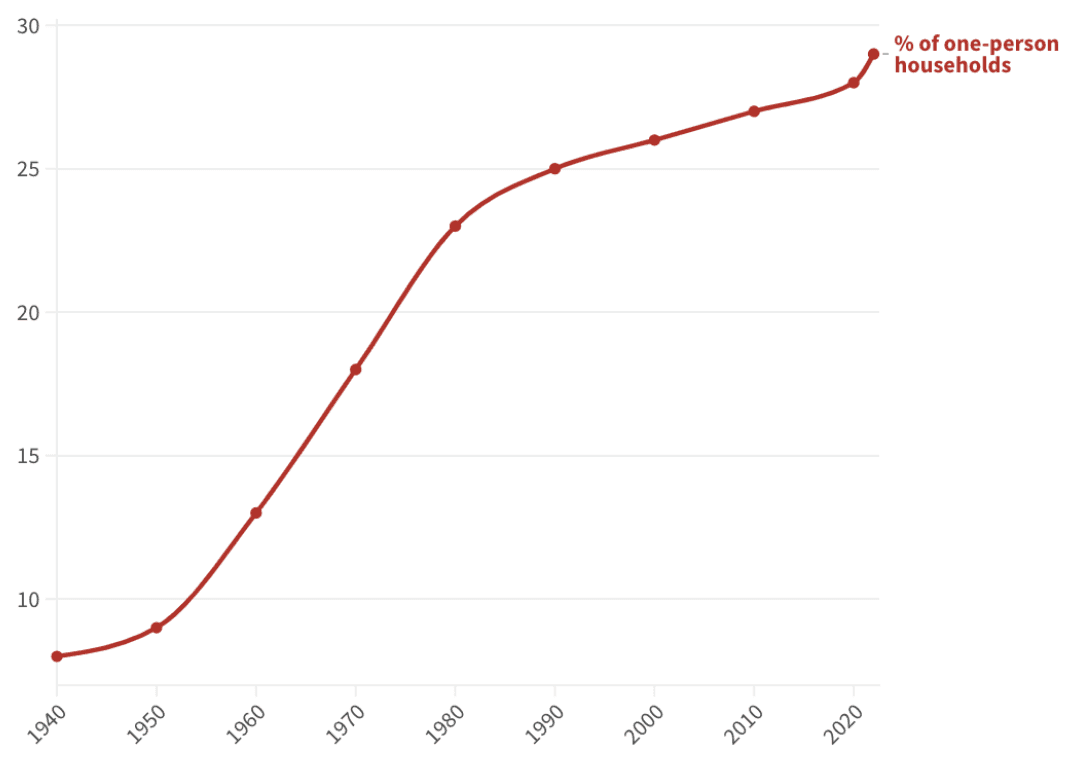This graph illustrates the declining trend of teenagers meeting up with their friends 'almost every day', with the rate decreasing significantly after 2010. Over the past three decades, the percentage of individuals having only one close friend has nearly tripled, accounting for 20% of the population. Additionally, the percentage of people reporting having 10 or more close friends has decreased from 40% to 15%. According to Jean Twenge (2020), this decline coincides with the rise of smartphones and social media. Source: Jean Twenge (2020).
This chart examines suicide, self-poisoning, and depression rates among girls aged 12 to 15 in the United States. The data predates the Covid-19 pandemic, originating from March 2020. Source: Monitoring the Future (March 2020).
The presented chart illustrates the percentage of individuals reporting the number of close friends they have, excluding relatives. The data reveals a clear decline in friendship over time. Sources: American Perspectives Survey (May 2021), Gallup (1990).
This chart depicts the loneliness percentage among different demographics of US adults. The striking finding is that 4 out of 5 individuals from Generation Z experience loneliness. Overall, 61% of all US adults reported feeling lonely, representing a 7% increase from the previous year. Particularly concerning is the dramatic result for Gen Z, with 79% reporting feelings of loneliness. Source: Ipsos Polling for Cigna U.S. Loneliness Index (July 2019).
Another chart that shows that more Americans are living alone. Single-person households have more than tripled since 1940. Source: US Census, 2020.
The appearance of smartphones and social media strongly correlates with increasing loneliness and decreasing social interaction among people, especially in the younger generation, who use the technology extensively and have not learned responsible usage. However, banning them doesn't seem like a viable option, as they are deeply integrated into daily life. Instead, it is crucial to learn how to use them responsibly.
Developing new technologies that learn from the mistakes of the old ones is equally important. This is the focus of the following discussion. I will contribute a small idea as inspiration.
How can social media products promote social connections while preventing loneliness and fostering social interaction? The smartphone can be a helpful tool in achieving this if used correctly. Rather than pulling the user into the feed, the goal is to encourage them to engage in the "Real Life" outside.
Remember ICQ?
A simple signal showing a user’s availability.
Availability Pings
When users switch to Now their contacts get notified.
No Chat, Just Meet
A set of interactions allow to meet.
Invite or Join
Inviting someone to join an existing meetup.
Get There Now
An invitation is sent to the available user.




